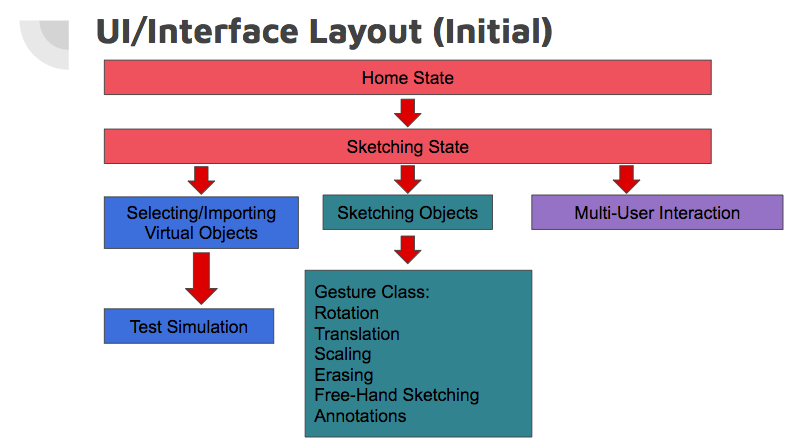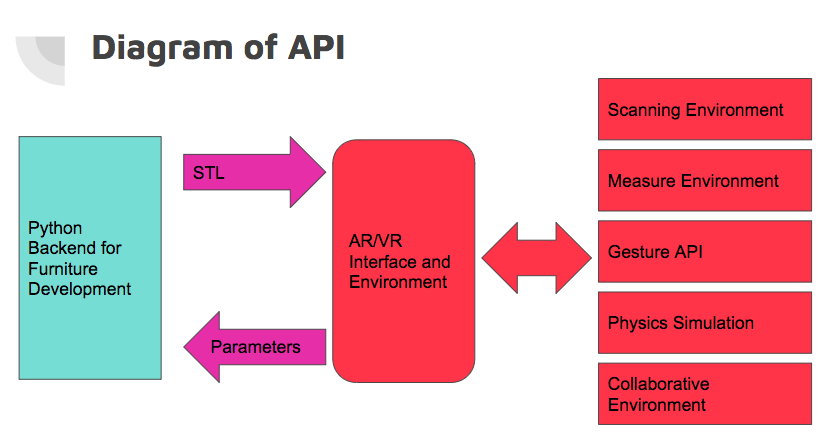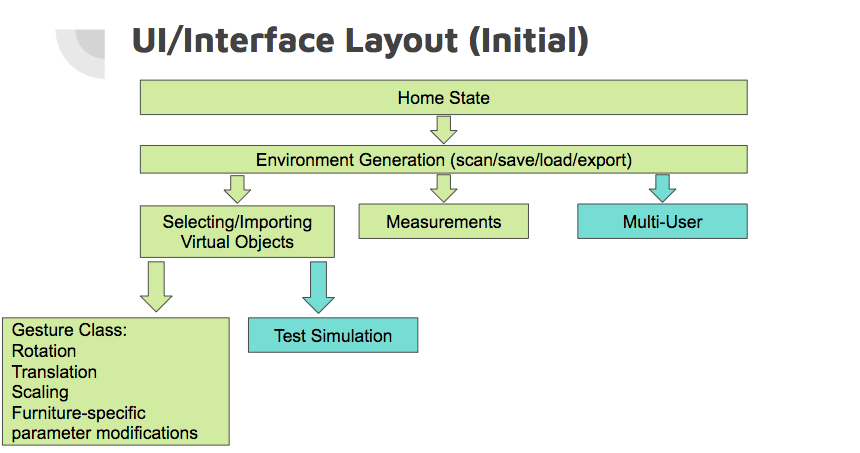Earlier this week, I was fortunate enough to discuss and share my learning across several meetings with teammates in my lab, my supervisors, and also fellow researchers who were also immersed in their individual studies. Initially, my main goal and motivation for pursuing this research project in furniture design was to investigate ways by which furniture designers could employ natural, intuitive 'sketching gestures' to generate a furniture object with measurable specifications in 3-dimensional space. In the same way artists in the past sketched with pencils and pens, studies, documented in my project proposal, have indicated the benefits of using physical interactions as a method of designing art in 3D space. Further details can be found in my project proposal, but as a short summary:
- The traditional 2D Graphic User Interface limits designers' abilities to translate their ideas into the physical, 3 dimensional environment.
- Contrary to the old, outmoded method of 'sketching on paper', which is easy to learn, offers great flexibility, and, as evidenced in multiple user experiments, enhances immersion, satisfaction and freedom when designing.
- Many designers typically lack real-time collaborative utilities to cooperate and design with peers in the same environment. In addition, virtual designs are often alien to the physical environment in which the design is to be implemented.
An initial model of the proposed product was designed 2 weeks ago, based on the literature, deliverables, and goals outlined in the project proposal.

Here, home state is treated as the starting point of the application, which immediately translates into a sketch state- utilizing the camera that displays the virtual environment, users are introduced into an open world where they have access to sketching mechanisms that are based on existing libraries such as Tiltbrush. Using this sketching state, users can not only select existing objects, but also sketch new ones and adjust its parameters. They can also interchange with collaborative channels and multiuser services that can be access through Unity's Photon server.
However, over the course of this week, after learning more about the available resources and features of the backend furniture compiler, I realized that while the premise of this design concept offerred an unprecedented and intuitive method of designing furniture (in contrast to industry-standard CAD devices that utilize a mouse-and keyboard setup to develop 3D products), the use of 'sketching' as a method of 'parameterization' for the existing backend compiler is complex and fails to utilize the pre-existing self-generative methods that the compiler users to create manufacturable designs. As a result, while I had initially focused my literature research on sketching mechanisms and translating sketches into virtual, manufacturable objects, to employ the existing utilities of the compiler, I would put my work on sketching aside, and focus primarily on manipulating existing virtual furnitures designed by the compiler.
After initial discussion with my research partner, June, we had decided on the following specifications:
Upon further review from peer researchers in our most recent lab meeting, I had an enthusiastic discussion with Tsang-Kai regarding the methods by which this research will easily help users learn how to design furniture. In particular, he questioned our metrics and assumptions that virtual reality and augmented reality are easy-to-use. Further evaluating the feedback from this duscssion, and exploring the research that I had compiled in my proposal, I realized that though there have been studies that demonstrate the qualitative benefits of this project, they have not offerred reliable inventories or metrics for quantifying the learning curve required for industry-standard CAD software. This stood out to me as a potential loophole in subsequent parts of this research, as I am looking to produce several user studies measuring the benefits and usability of our research.


In the coming weeks, while concomitantly developing the draft product, I will be further investigating apposite literature relevant to specific virtual manipulation of geometries in our aforementioned model. In particular, I will also research methods and metrics of quantifying the usability and ease of learning of our research, in contrast to industry-standard devices. The models and abstractions that have been displayed here will continue to be developed.